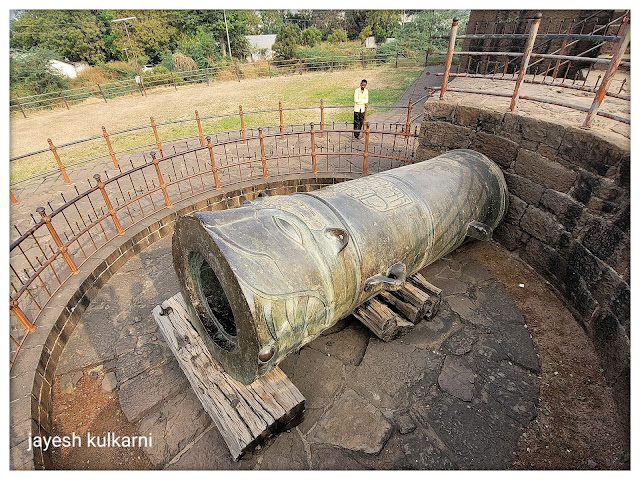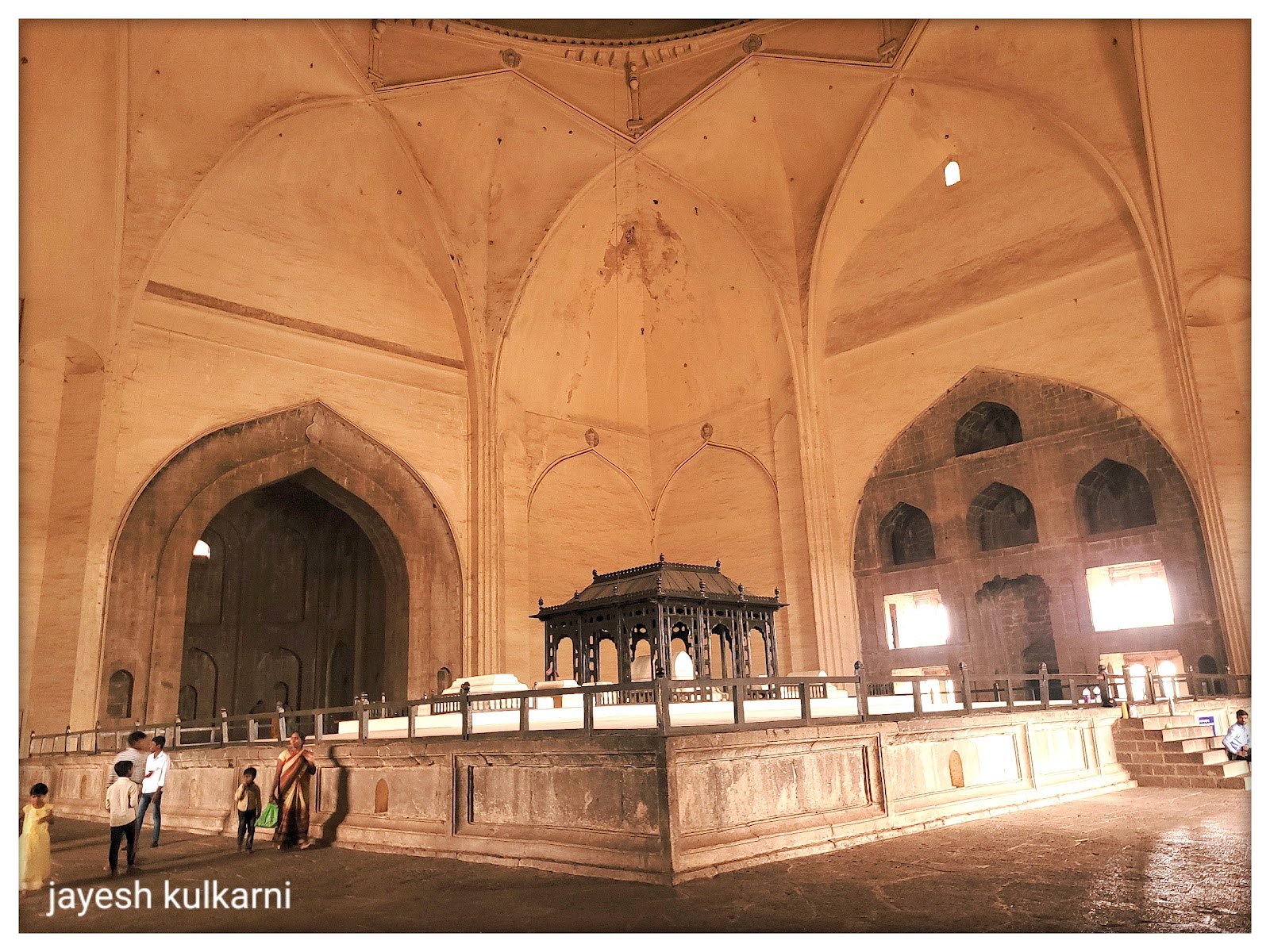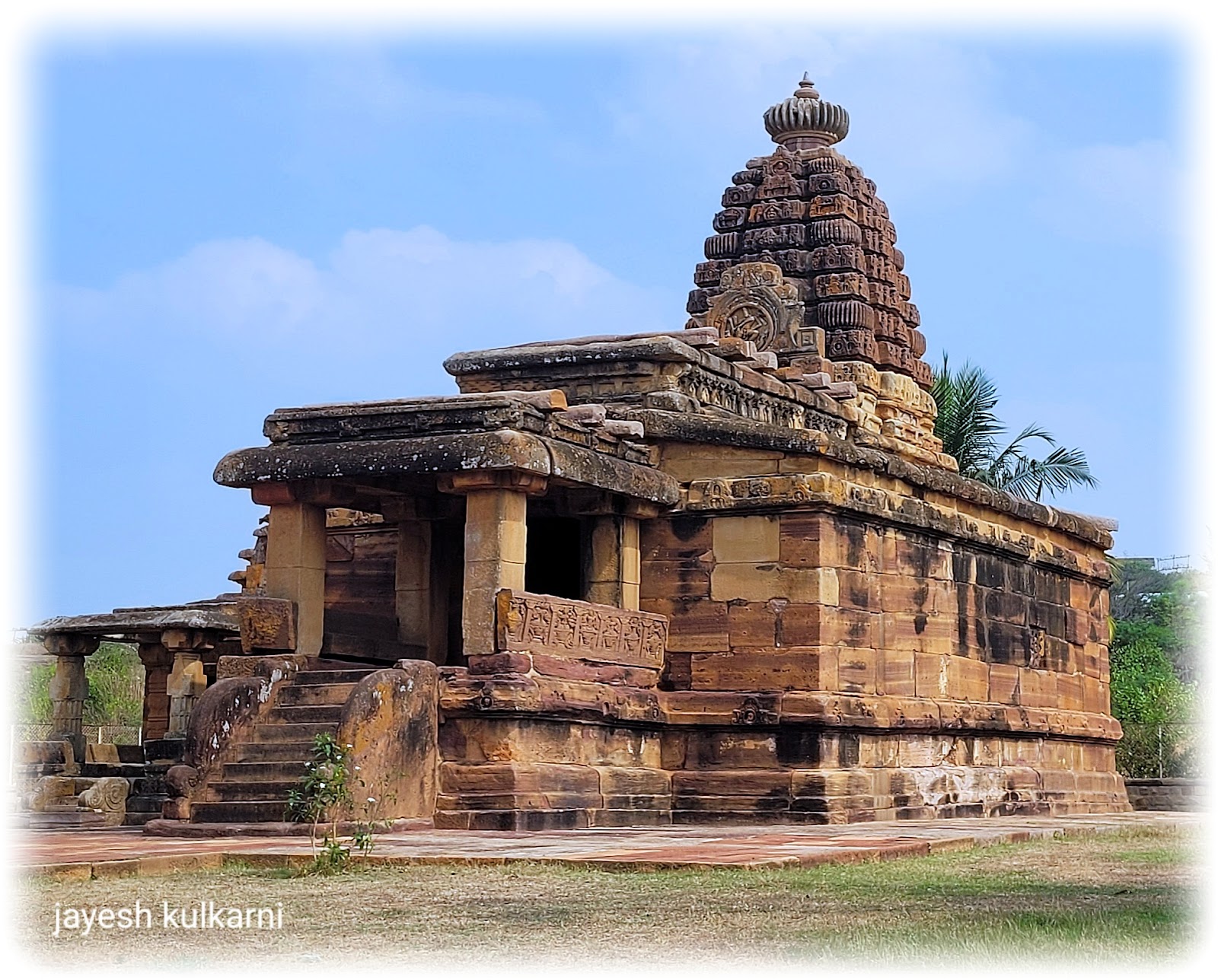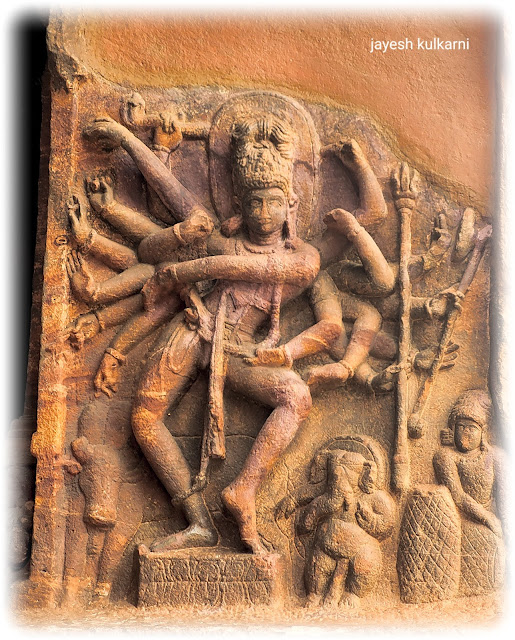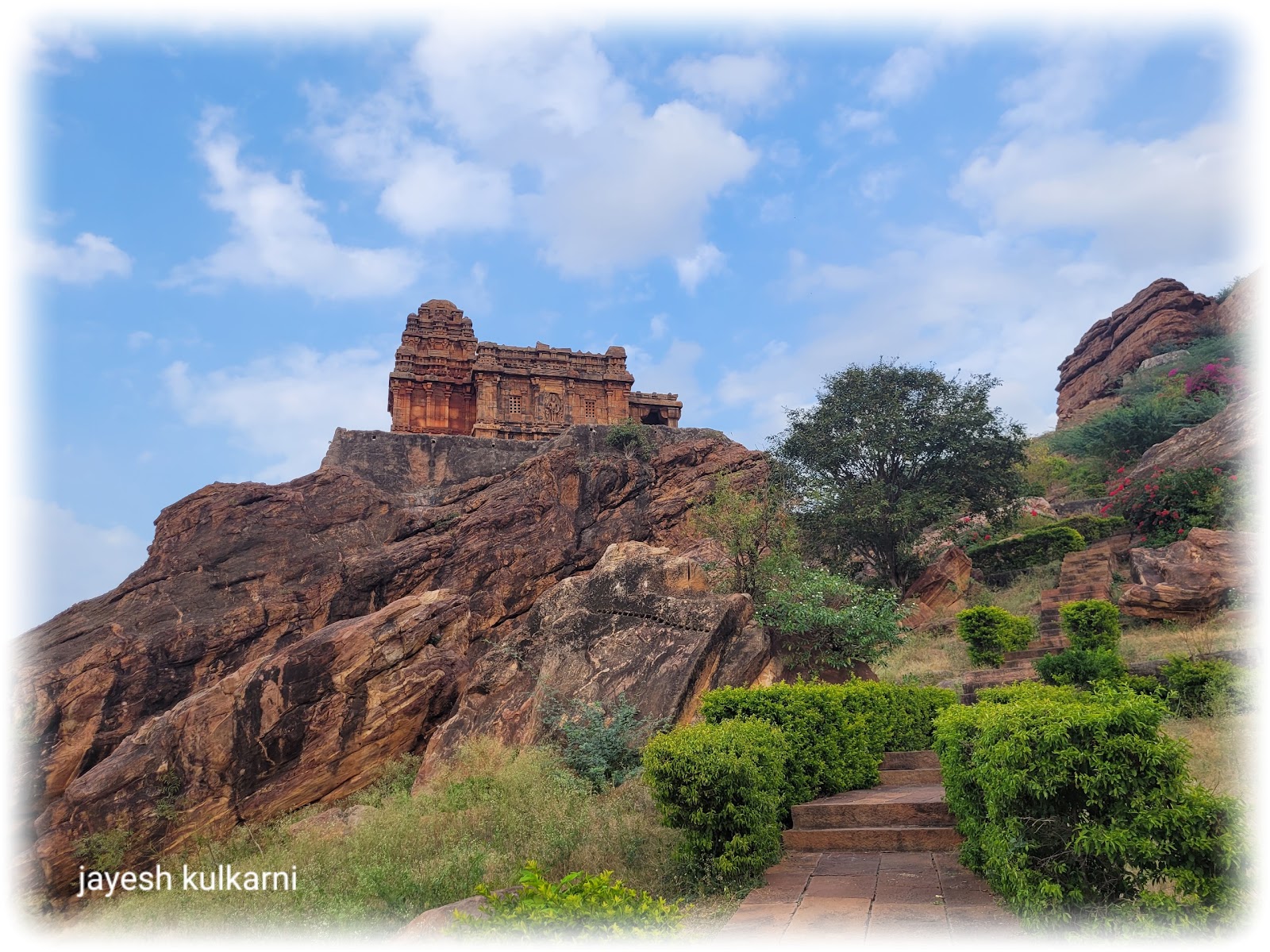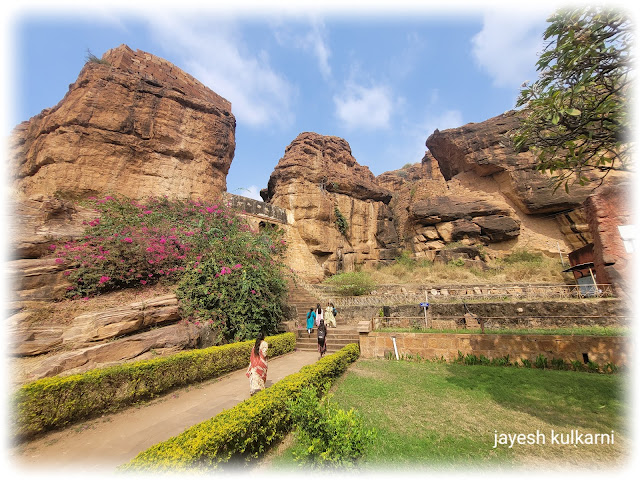Bara Kaman: The unfinished arches of this mausoleum, reaching skyward, evoked a poignant beauty, narrating tales of ambition and the impermanence of human endeavours.
During our ride, we encountered an elderly lady whose eyes sparkled with joy at the sight of us together in the horse cart. Her warm smile and blessings added a personal touch to our journey. Moments later, a cheerful five-year-old greeted us with enthusiastic hand waves, his innocent delight reflecting the welcoming spirit of Vijapur's residents.
After the ride we visited the iconic Gol Gumbaz. The sheer scale of its dome, one of the largest in the world, left us in awe. Inside, the famed whispering gallery intrigued us; even the softest murmur travelled across the vast space, a marvel of acoustic engineering that connected us to the ingenuity of its creators.
As dusk approached, we found ourselves at the Ibrahim Roza, often hailed as an inspiration for the Taj Mahal. The intricate carvings and symmetrical gardens, bathed in the golden hue of the setting sun, mesmerized us. The mausoleum's elegance and the tranquil atmosphere provided a perfect conclusion to our day, leaving us with a deep appreciation for the city's artistic legacy.
Our brief sojourn in Vijapur was not just a journey through monumental structures but also an immersion into the warmth of its people and the enduring spirit of its heritage. The city's harmonious blend of history and humanity enriched our travels, setting a reflective tone for the adventures that lay ahead.
Our journey through the heart of Karnataka was a voyage into the annals of history, where each site narrated tales of devotion, artistry, and imperial grandeur.
Aihole: The Cradle of Temple Architecture
Often called the "Cradle of Indian Temple Architecture," Aihole welcomed us with its serene charm. This quaint village is home to over 100 temples, each narrating stories of divine devotion and architectural brilliance.
We began at the Durga Temple, an elliptical marvel that stands apart with its semi-circular sanctum and exquisite carvings depicting scenes from the Ramayana and Mahabharata. As sunlight bathed the sculptures, they seemed to breathe life into the stone figures, making us pause in awe of the craftsmanship.
The Lad Khan Temple, an architectural experiment of its time, captivated us with its unique design. Originally a royal assembly hall, it later transformed into a temple, showcasing the adaptability of Aihole's artisans.
Nearby, the Ravana Phadi Cave Temple, hewn from rock, offered intricate depictions of Shiva in various forms, surrounded by celestial beings that seemed to narrate cosmic tales.
Each monument in Aihole whispered secrets of experimentation, a legacy passed down to future generations of builders.
Pattadakal: The Confluence of Styles
A short drive led us to Pattadakal, where the temples stand as a harmonious blend of northern Nagara and southern Dravidian architectural styles. A UNESCO World Heritage Site, Pattadakal symbolizes the zenith of Chalukyan artistry.
The majestic Virupaksha Temple greeted us first. Built by Queen Lokamahadevi to commemorate her husband’s victory, it is a masterpiece of symmetry and intricate sculpture. Inside, the detailed carvings of gods, goddesses, and mythical creatures enveloped us in a divine embrace.
Close by, the Mallikarjuna Temple, smaller yet equally enchanting, echoed similar themes of celebration and devotion. The sculptures of women adorned in traditional jewelry and poses seemed to transcend time, connecting us to an era of cultural vibrancy.
All the temples provided a quieter reflection of Pattadakal’s eclectic spirit. Its detailed narrative panels depicted episodes from the epics, showcasing the artisans' storytelling prowess.
In Pattadakal, legacy found its voice in unity ... unity of northern Nagara and southern Dravidian architectural styles, a confluence of ideas immortalized in stone.
Pattadakal and nearby region is home to many megalithic dolmens. These are prehistoric and evidence of human settlement before 1,000 BCE, likely 3,000 BCE. We were lucky enough to see one.
Badami: The Soul of the Deccan
As we approached Badami, the ochre-hued cliffs of the Deccan plateau framed our view, standing sentinel over the town. Known for its rock-cut cave temples, Badami felt like stepping into the soul of the Chalukyan dynasty.
The Cave Temples, carved into sandstone cliffs, left us spellbound. The first cave, dedicated to Shiva, welcomed us with a colossal depiction of Nataraja, his dance resonating with cosmic energy.
The second and third cave, devoted to Vishnu, featured his incarnations, each carving narrating celestial stories with astonishing detail.
Descending further, we reached the serene Agastya Lake, bordered by the Bhutanatha Temples. Their reflection in the tranquil waters added an ethereal beauty to the landscape. Climbing to the Upper Shivalaya, we marveled at the panoramic views and the temple’s fort-like structure, which stood as a guardian of Badami’s enduring spirit.
In Badami, legacy was etched not just in the temples but in the cliffs themselves—a timeless witness to centuries of devotion and artistry.
As our journey came to a close, the golden hues of the setting sun painted these historic sites in an otherworldly light. Aihole, Pattadakal, and Badami reminded us that legacy isn’t just about preservation; it’s about continuity. Each sculpture, each stone, and each temple told stories that transcended time, inspiring us to reflect on our place in this endless narrative.While we were looking at man made marvels, nature had its own way presenting her creation in vibrant colours like this Indian Roller!
India’s heritage isn’t just carved in stone; it’s etched in the heart of every traveler who witnesses it. As we left, we carried with us the echoes of these ancient sites, promising to share their tales and keep their legacy alive.
Reflecting on our journey, we were not only awestruck by the architectural splendours of Vijapur, Aihole, Pattadakal, and Badami but also deeply moved by the warmth and hospitality of the people we encountered. From the cheerful greetings of local children to the insightful narratives of our guides, every interaction enriched our experience, making this expedition through Karnataka's historical landscapes truly unforgettable.
The enduring legacy of Vijapur, Aihole, Pattadakal, and Badami teaches the modern world the art of harmonizing creativity with precision, collaboration with individuality, and innovation with timeless values. Just as ancient artisans carved their vision into stone, we must craft solutions with resilience and purpose, leaving behind a legacy that transcends time. True progress lies in building systems that honour both human ingenuity and the larger tapestry of our shared existence.
Thanks for reading, if you are still with me! Feel free to add your comments and / or share with people who may like.






